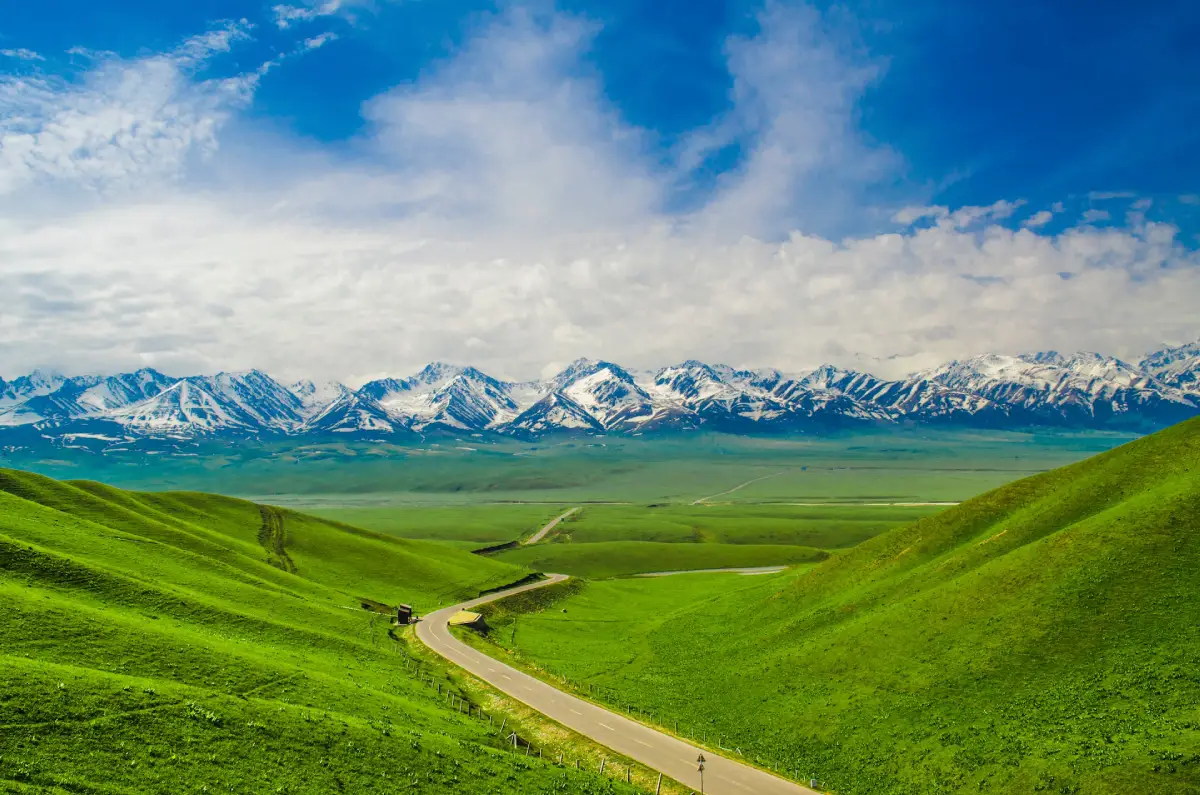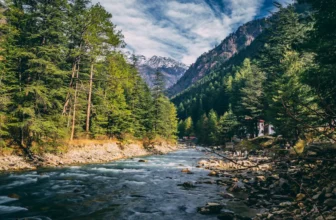
The Xinjiang Uygur Autonomous Region, located in China’s far northwestern region, is a treasure mine of cultural diversity, historical artifacts, and stunning scenery. Xinjiang, as a key destination on the historic Silk Road, provides an enriching experience for worldwide tourists.
The China Xinjiang Tour offers a memorable trip that combines ancient history, cultural diversity, and breathtaking nature. It’s an unforgettable tour that invites you to experience the treasures of this historical path.
Are you Travel to Xinjiang?
What to Do and See? Let’s explore it!
Xinjiang is renowned for its beautiful scenery of desert, Gobi, Snow Mountain, lake, forest, grassland, rural village, etc. A trip on China’s Silk Road is unique to any other way to discover about China’s rich cultural diversity and ancient history.
Experience the Contrasts of Deserts and Mountains.
Xinjiang Heavenly Lake has beautiful natural water beauty.
During your Silk Road Tour, you may find peace in scenic areas such as Dunhuang, where you may climb the stunning Mingsha Sand Dunes and ride a camel like in the old days.
Then, for a more intense desert experience, drop into the Turpan Depression desert, the world’s third deepest depression. Further west, ascend from hot desert austerity to Heavenly Lake’s watery blue alpine beauty and lush green meadow.
Then, if you have time, you may travel the harsh Taklamakan Desert to Kashgar, a border outpost with a bazaar as aromatic and lively as in ancient times.
How Long Is a Silk Road Tour?
The amount of places you decide to visit will determine how long your Silk Road journey will last.
If you want to have an intensive and rich experience from your trips, we recommend that you set aside at least 6 days (for two or three places) and up to two weeks. Read more about How Long Should You Spend on the Silk Road.
The Silk Road’s most recommended and iconic destinations include Xi’an, Dunhuang, Zhangye, Turpan, Urumqi, and Kashgar.
Ningxia and Gannan are hidden gems with rich culture and stunning scenery.
Best Times to Visit the Silk Road
The best time to explore the Silk Road is from May to October, when weather conditions are pleasant with an average temperature of 15°C (59°F). Summer can get hot, but it’s a dry heat, making it more bearable than humid climates.
Spring (April to June) and fall (September to October) offer picturesque landscapes with blooming flowers and lush grasslands.
In the winter months, tourism slows down, presenting an opportunity for a more peaceful experience. Xinjiang’s snow-covered scenery, particularly in Kanas, is exceptionally beautiful. For those seeking winter activities, the Silk Road International Ski Resort in Xinjiang is a noteworthy attraction.
Accommodation Tips for the Silk Road
For a comfortable stay along the Silk Road, prioritize 4- or 5-star hotels, especially in popular tourist areas. These establishments offer Western-style amenities and often have English-speaking staff. Keep in mind that in more remote cities like Kashgar and Turpan, star-rated hotels may not match the standards of larger urban centers. To ensure a pleasant experience, we can assist in arranging the best accommodations for you.
When booking independently, ensure the hotel is licensed to host foreigners. Consider convenient locations:
- In Xi’an, opt for areas near the City Wall or Bell Tower for easy access to dining and transportation, or near the Greater Wild Goose Pagoda for a quieter stay.
- In Zhangye, choose lodging near Zhangye Danxia Landform Park. Staying in a Mongolian yurt at Kaoshan Camp is also a unique option.
- In Dunhuang, select accommodations close to the Mingsha Mountains or in the city center.
- For Turpan, downtown areas like Xihuanbei Road, Gaochang Road, Qingnian Road, Lvzhou Road, and Wenhua Road offer convenient options.
- In Urumqi, consider locations near Renmin Park and Hongshan Park in the city center.
- For Kashgar, downtown accommodations provide the best experience.
Silk Road Transportation
Traveling along the Silk Road involves a combination of flights, bullet trains, and private transport to cover vast distances and explore major tourist cities.
Typically, journeys commence from easily accessible cities like Xi’an or Lanzhou, which are well-connected to other major cities in China.
Here’s a suggested itinerary: “Xi’an/Lanzhou–Zhangye–Dunhuang–Jiayuguan– Turpan–Urumqi–Kashgar.”
- Xi’an to Zhangye: A 2-hour flight.
- Zhangye to Dunhuang: A 4-hour journey by bullet train.
- Dunhuang to Jiayuguan: A 2½-hour trip by bullet train.
- Jiayuguan to Turpan: A 5-hour journey by bullet train.
- Turpan to Urumqi: A 1-hour trip by bullet train.
- Urumqi to Kashgar: A 2-hour flight.
- This efficient transportation plan allows you to make the most of your Silk Road adventure.
Food on the Silk Road
Food along the Silk Road offers a delightful variety of flavors and specialties. Some must-try dishes and treats include:
- Local raisins, cashew nuts, walnuts, almonds and other dairy and fruit products in Xinjiang.
- The famous Muslim beef noodle soup in Lanzhou.
- Xi’an’s delicious roujiamo, often called “pita bread hamburgers,” and Uighur shish kabobs.
- Nang, a flatbread, and milk tea, cherished Uighur staples.
Don’t forget to savor the traditional Muslim yogurt of Kashgar, indulge in succulent skewers of roasted meats, and relish the diverse range of Muslim rice dishes available along your journey.
Popular Souvenirs
Here are some of the most sought-after souvenirs and local products you can find along the Silk Road:
- Exquisite rugs and carpets
- Unique textiles and handicrafts
- Dried fruits and local delicacies
- Traditional Chinese paintings
- Fine ceramics and pottery
- Luxurious silk products
- Distinctive local alcoholic beverages
These items make wonderful gifts and keepsakes to bring back home from your Silk Road tour adventure.






